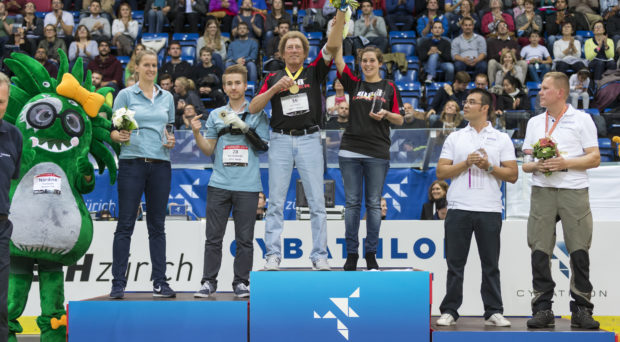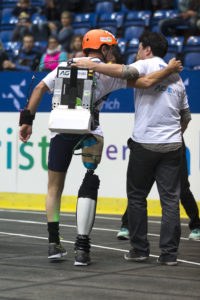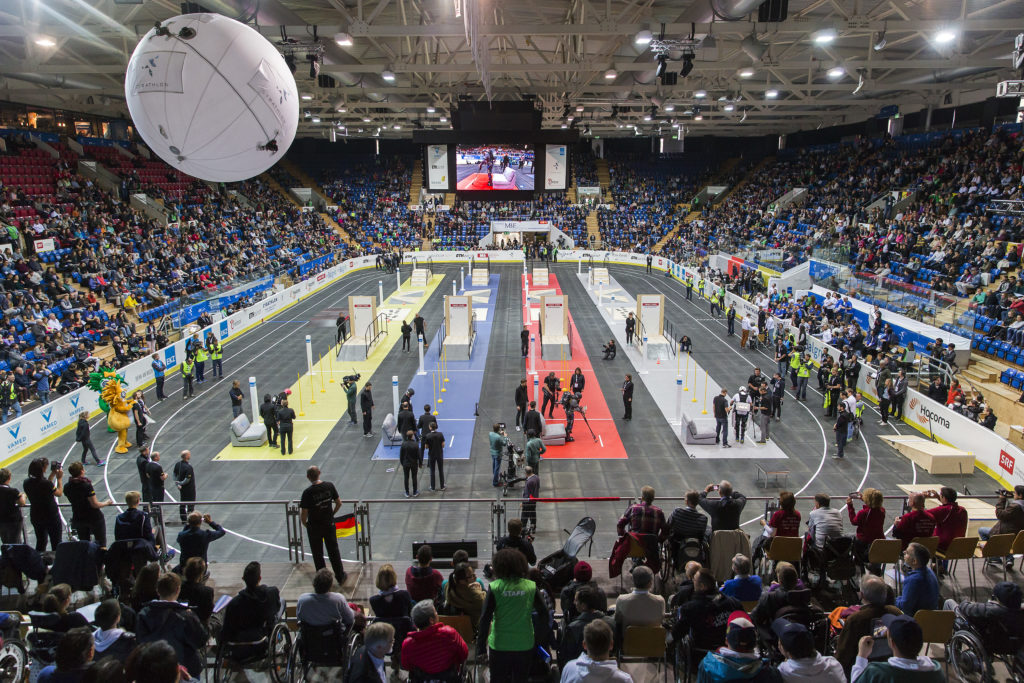
The field of robotic assistive technology has rapidly evolved over the past decade, promising greater independence and quality of life for individuals with physical (and other) disabilities. Despite this progress, the development and application of assistive technology faces a great many challenges, related to aspects such as usability, robustness and reliability.
These aspects are often overlooked by the scientific community which is driven by incentives that favor high complexity and do not yet sufficiently value the involvement of persons with disabilities in the conception and development of novel assistive technologies. This has resulted in many research prototypes never being tested in-depth by potential users, even fewer reaching commercialization, and a low acceptance of technologically advanced assistive devices in general.
One of the major limitations of assistive technologies developed in research labs is that these are rarely evaluated in real-world conditions, where usability, robustness and reliability become crucial. To change the dynamics of the field, showcase the state of the art, and identify limitations in the use of robotic assistive technology in activities of daily living, Prof. Robert Riener of ETH Zurich initiated the CYBATHLON, a unique championship for people with disabilities using state-of-the-art robotic assistive technologies.
CYBATHLON

On October 8, 2016, 66 pilots in 56 teams from 25 nations gathered in Zurich, Switzerland to compete in six disciplines, cheered on by 4600 spectators. Empowered with robotic arm and leg prostheses, exoskeletons and wheelchairs, as well as brain-computer interfaces and functional electrical stimulation, pilots competed on achieving representative tasks of daily life. For the robotic assistive devices, this included ambulating over ramps and stairs, and manipulating objects of daily life. Points were primarily received for achieving the tasks, with the execution time being secondary.
Two days before the CYBATHLON 2016, the scientific community met for the first CYBATHLON Symposium, to highlight recent progress in the field of robotic assistive technologies and reflect on addressing the major challenges in the field. This event featured six keynotes (one per CYBATHLON discipline), 8 short talks, and 48 posters, and was attended by 300 participants, including many from CYBATHLON teams.
The two CYBATHLON events clearly reached their main goals, impressively illustrating the potential of robotic assistive technologies, promoting user involvement in development, increasing the focus on usability and robustness, and sparking a societal discourse on the mobility needs and challenges of persons with physical disabilities. But the events also highlighted a number of shortcomings of these technologies.

“Not high tech, not low tech, just the right tech”
60% of prosthesis users in North America choose body-powered prostheses over more advanced solutions.
In his talk on arm prosthetics, Jon Sensinger pointed out that 60% of prosthesis users in North America choose body-powered prostheses over more advanced solutions, largely due to the complexity as well as the low functional benefit and reliability of more technologically advanced solutions. For him, the main challenge for the field lies in developing solutions that are “Not high tech, not low tech, just the right tech”.
Usability, robustness and reliability are far more important than advanced functionality, as users can compensate for this to a large extent with their remaining motor function. This was most prominently visible in the powered arm prosthesis race, which was won by Robert Radocy using a body-powered arm. With his years of experience through everyday use, he has acquired advanced skills allowing him to compensate for the lacking functions of his arm prosthesis with the rest of his body.
The same also became evident in the powered leg prosthesis and exoskeleton races, with pilots compensating for lacking functions with their sound limb (powered prosthesis race) and crutches (exoskeleton race). In his insightful commentary, Peter Neuhaus described this, saying: “With the exoskeleton, we only need to get the walking trajectories close to the ‘optimal’ solution, and the pilot could compensate and adapt to whatever motion the exoskeleton was providing, or not providing.” This underlines the necessity to achieve a symbiosis between the user and their assistive device, and to tailor the technology to the capabilities and needs of each individual.

In his keynote lecture, Hugh Herr showed that progress in robotic assistive technologies will also come from advances in other fields, such as advanced measurement devices to characterize stump tissue properties for prosthetic socket production, and novel surgical approaches that prepare individuals with limb amputation for the use of powered prostheses. Users will benefit from a tighter integration with the central nervous system, which could positively impact usability and acceptance of such technologies.
At the CYBATHLON, the advantage of a tight integration with the CNS became evident in the Functional Electrical Stimulation (FES) Bike Race, which was won by the one group that worked with implanted stimulators, as described by McDaniel and colleagues.
The CYBATHLON Symposium was rounded off by a podium discussion involving assistive technology users and developers, representatives from industry and politics, as well as ethics researchers. The panel members described the field of robotic assistive technology as a highly challenging, but also highly ethical research area, which requires understanding of user needs as well as clinical, ethical, socioeconomic and regulatory aspects. The need to more strongly involve people with disabilities not only in the development process, but also in the early discussions, grant writing and, most importantly, in grant evaluation panels, was clearly identified.
The CYBATHLON certainly made a first push in this direction. As Ienca and colleagues nicely put it: “it shifts the location of power by putting the user (the individual athlete with disability) at the center of the arena. This centrality of the user in the competition is an ultimate form of empowerment: instead of being a passive recipient of technology-assisted rehabilitation, the person with disability becomes the protagonist of a cooperative process.” Based on the great success of the CYBATHLON 2016, ETH Zurich has recently announced that it will host the second CYBATHLON in Zurich in 2020.
Comments